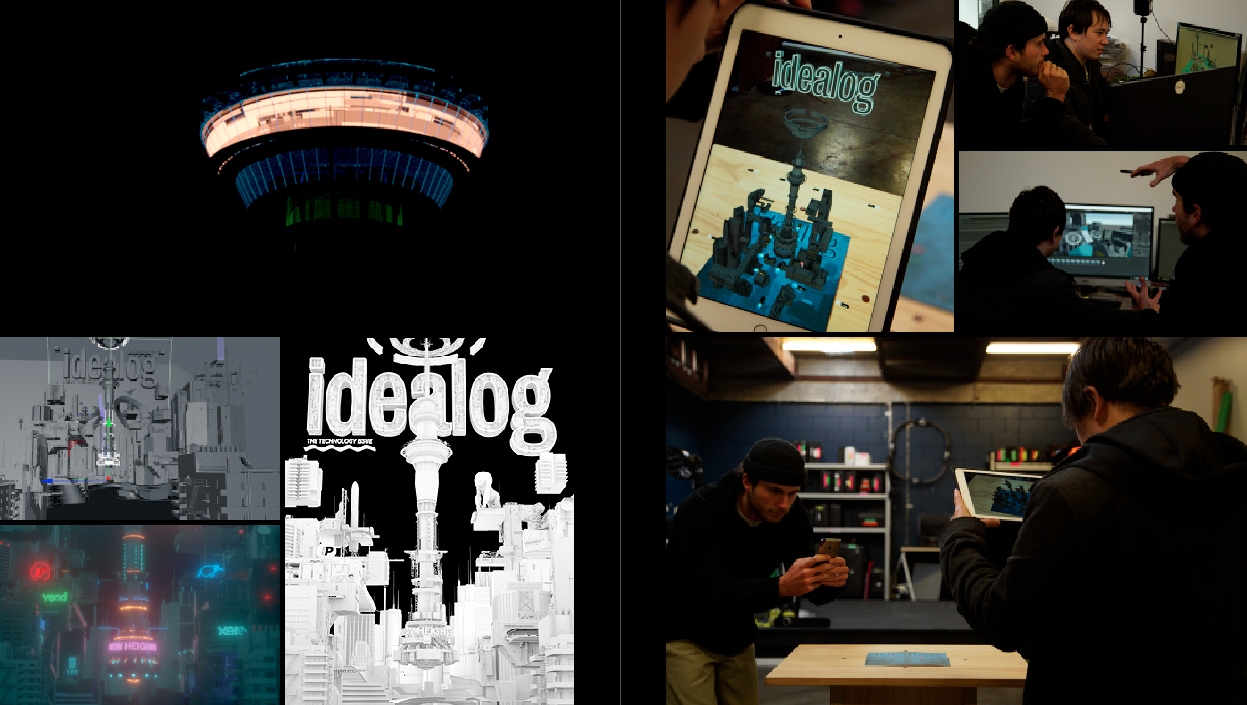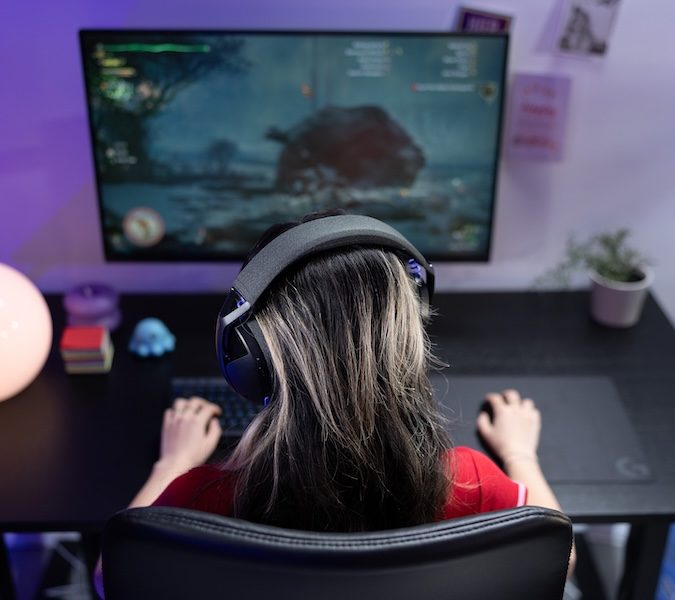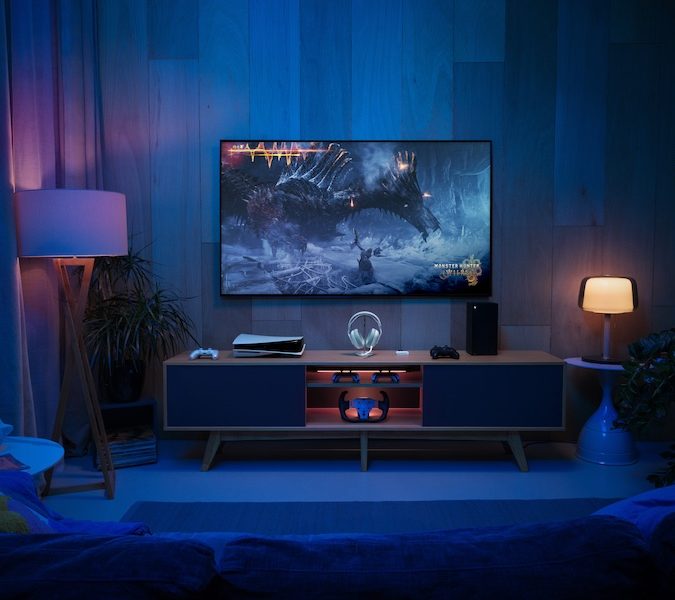On the cover: how ICG, Guangyu Li and Staples VR embraced the idea of ‘New Heights’ for Idealog’s just-released Tech Issue

Li, a talented 3D motion graphic artist and 24-year-old, is about to graduate from Media Design School in Auckland. Armed with a list of some of New Zealand’s top tech companies, both well-established and up-and-coming, Li was told to interpret what a technology-driven economy could look like in a future Auckland cityscape. He says he drew inspiration for his piece from sci-fi films like Interstellar and Blade Runner, but ultimately came up with his own take on the futuristic city genre. He also went on a creative journey to figure out the centre piece of the image: the Sky Tower.
{% gallery ‘tech-experiment-li’ %}
While the initial draft showed anti-gravity ‘rocks’ floating around the top of the Sky Tower, Li and Wu decided on an anti-gravity power structure at the base of the building (which, experts agree, is an obvious solution to the issues caused by those pesky earthquakes).
“The design outcome came from my intuition and through action-based design of constructing and mixing different architecture,” Li says. “The period of the time I grew up in also plays an undeniable role, such as the look and feel of video games from the ’80s and ’90s. I had to find a fine line between my influences and the recognisable identity of the Sky Tower in its current shape.”
Li says the advantage of using a format like 3D design to portray a future cityscape is its realism.
“It can create greater visual impact with a realistic touch. It is different to 2D design or illustration and the advantages of it are shown in how the relationships between lights and objects can be established, and that gives the design more potential.”
ICG retoucher Daryl Simonson helped make sure the background was a picturesque sunset, rather than a smog-filled, dystopian-looking city, while illuminating all the buildings and signs to make them more detailed and realistic.
And finally, creative tech company StaplesVR game developer Masaya Todoroki and creative Jason Delaveau used augmented reality to bring to life Li’s cover art, further exploring what this city of the future could look like.
“The AR artwork poses questions about the future of transport and engineering and further teases common and not so distant predictions of technological influence such as levitating buildings, hover cars and delivery drones,” Delaveau says.
{% gallery ‘tech-experiment-staples’ %}
“The AR app itself brings light to the integration of AR technology into the media and how we can soon expect augmented reality technology to redefine how traditional forms of media are consumed by everyday people. In the next few years, we’ll see print media become more interactive and ever-present through various AR goggles, mobile devices and projected holograms.”
The Idealog AR app is available to download for free from both the Google Play Store and Apple App store.
How to use the AR cover:
1. Download the Idealog AR app from the Google Play or Apple App Store (FYI, this is different to the last Idealog AR app)
2. Open the app and activate the AR city by pointing your camera at the Idealog Tech issue cover.
3. To change the scale of the AR city, using two fingers, pinch and drag the screen.
4. Tap the buildings to reveal the holographic wire frame of the city.





